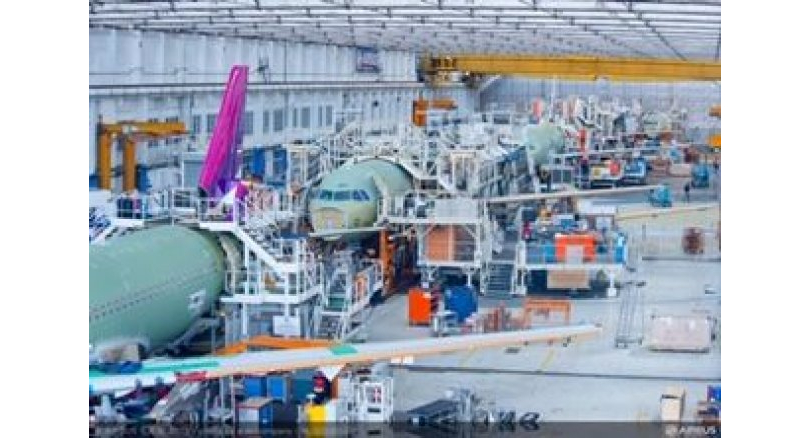Thailand: Huge potential seen in MAINTENANCE work
WHILE THAILAND’S aeronautical industry will see a rapid expansion in the next 20 years as the country is set to become the Asean region’s hub for aircraft maintenance repair and overhaul (MRO), strong political will and a “mechanism” are needed to make the fuller ambition come true.
Airbus and national flag carrier Thai Airways (THAI) signed a joint venture for MRO facilities at U-tapao Airport in Rayong province, in June 2018. Creating an MRO hub at U-tapao Airport, located in one of the three provinces in the Eastern Economic Corridor (EEC) special economic zone, has been one of the EEC’s flagship projects since its launch under the Thailand 4.0 policy in 2016.
Foreign investors see the potential for growth in Thailand’s aeronautical industry in the next two decades. This year, some 7,000 aircraft will fly across the Asia Pacific region, and the number is expected to reach 20,000 over the next 20 years, according to Airbus.
“Hence, there is a need to increase maintenance capacity in the Asian-Pacific region,” said Pierre Jaffre, president of Airbus Asia Pacific.
The government’s Thailand 4.0 policy and the development of the EEC, he said, present a promising opportunity for Airbus to meet this demand, and has led it to establish an MRO centre in cooperation with THAI in Rayong.
“Of all the EEC projects, the MRO hub at U-tapao Airport has the highest possibility for success,” said Phacharaphot Nuntramas, senior vice president for global business development and strategy group at Krungthai Macro Research.
This, he explained in an interview with The Nation, is because the aeronautical industry in Thailand has strong fundamentals with more opportunities to grow in the economic environment of the Asean region.
Particularly, he said, there has been a growth of smaller airlines such as AirAsia and Vietjet in the region, and the aircraft from these smaller carriers will require maintenance.
“The other key MRO centre in the region is located in Singapore, which faces the challenge of limited land space,” he continued. The growth of smaller airlines means that smaller-sized aircraft will be used more often, leading to a growth in the demand for maintenance space”
“This market trend presents an opportunity for the MRO centre at U-tapao to rise and become Southeast Asia’s new regional MRO hub,” Phacharaphot stated.
Looking at the big picture, the MRO centre is a key plank in the development plans of the aeronautical industry, said Thailand’s former ambassador to France, Sihasak, Phuangketkeow, who helped THAI and Airbus conclude the MRO deal last year, adding that Thailand needs to ensure the sector’s future growth.
Thailand has great potential in the sector, as the Kingdom is already a regional aviation hub and boasts a strong automobile and electronics manufacturing base on which to build an aircraft and spacecraft sector, he said.
The country has already developed legal instruments to encourage foreign investment, not only for the MRO sector but also for original equipment manufacturers (OEMs), said Sihasak who is now an advisor to the EEC project. “We are improving our ecosystem to accommodate S-curve technology industries,” he said.
The TIROS II with Airbus could also be spun off to encourage a future space industry in the country, as the technology transfer could help Thais to develop the sector, he said.
The biggest challenge to the long-term development of the MRO centre, like other projects in the EEC, is the imminent lack of skilled labour, Phacharaphot said. Sihasak agreed and added that the country also needed to compete with neighbouring Asean countries, notably Singapore, Malaysia and Vietnam which have had a stronger focus on the aviation and aeronautical industry.
“Our strength is that our workforces have a strong commitment to their work and our airbases with huge space, like U-tapao, are available,” he said. “We are also aiming higher to build an ‘aerotropolis’ in the region.” Research has shown that in the next 10 years, the targeted ‘S-Curve’ technological industries in the EEC will require an additional one million workers, with almost 500,000 jobs in demand in the next five years, according to the EEC office. The research also revealed that the aeronautical industry will demand an additional 30,000 skilled workers in the next half-decade.
To meet this demand, Phacharaphot suggested, the supply-side will need to quickly develop the appropriate curricula to build a capable labour force to support the growth of the aeronautical industry in the next two decades.
An alternative solution is to recruit foreign talent to, for example, operate the MRO centre in U-tapao. The government has been issuing “Smart Visas” since February 2018 to allow highly trained foreign talents working in the targeted ‘S-Curve’ technological industries to work in the Kingdom for up to four years without having to renew their visas yearly.
However, adoption of the Smart Visa has been disappointing, with only approximately 100 foreign talents so far having been issued the special visa in the past year, according to the Digital Economy Promotion Agency (DEPA).
More importantly, Sihasak said, both the government and private sector should have a clear joint vision and a strong will to get aboard the S-Curve technology industry. The country should have a national mechanism to move this sector forward, he said. “We cannot just wait for foreign investment and technology transfer to develop the aeronautical industry,” he said.
Source: http://www.nationmultimedia.com/detail/Economy/30371913


 English
English




